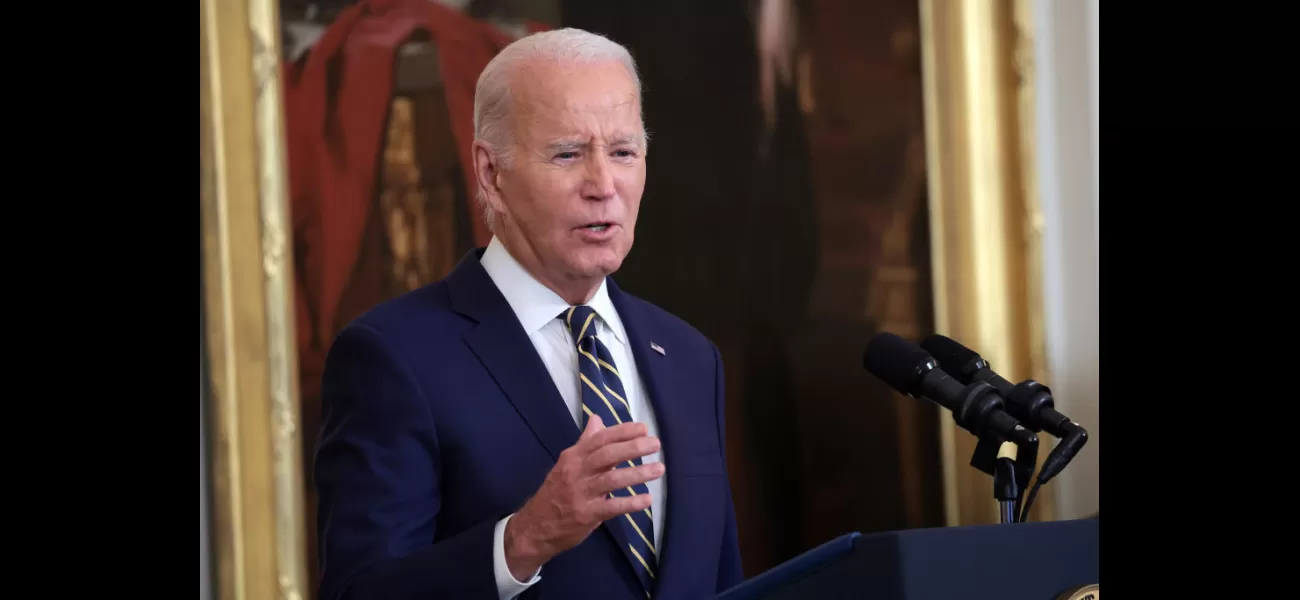Starting in February, the SAVE student loan repayment plan from the Biden Administration will be implemented.
Biden's SAVE student loan plan will start in February instead of the summer as originally planned, according to Black Enterprise.
February 1st 2024.

The Biden administration has some exciting news for student loan borrowers. They have decided to launch the revamped income-driven repayment plan, SAVE, earlier than expected. Originally, it was supposed to start in the summer, but now it will begin this month, in February. This plan, which has been designed to be more affordable than other repayment programs, will replace the REPAYE plan.
In a Facebook post, President Joe Biden reminded the public of the basic tenets of the SAVE program. He wrote, "Folks, don't forget. If you are enrolled in our SAVE student loan repayment plan, took out less than $12,000 in loans, and have been in repayment for 10 years: You will get your remaining student debt cancelled – starting next month." This is great news for borrowers who have been struggling to make ends meet.
One of the major improvements of the SAVE plan is the larger poverty exception, which means that more of a borrower's income will be ignored when calculating their monthly payments. This, along with more affordable payments and a subsidy that erases excess interest, will help prevent ballooning balances. As a result, over 7 million Americans have already enrolled in the SAVE program, as reported by officials from the Biden administration to Forbes.
If you're wondering if the Saving on a Valuable Education (SAVE) plan is right for you, you can use the Loan Simulator to get an estimate of your monthly payment and payoff amount under different repayment plans. The Federal Student Aid Twitter account shared a link to the simulator, encouraging borrowers to take advantage of this helpful tool.
Under the SAVE plan, borrowers with initial balances between $12,000 and $21,000 may be eligible for student loan forgiveness in under 20 years. This is faster than the typical 20- or 25-year forgiveness threshold under other income-driven repayment plans. According to the Department of Education guidelines, "Beginning in February 2024, the SAVE Plan will give borrowers who originally borrowed $12,000 or less forgiveness in as few as 10 years." This is a significant reduction in the amount of time it takes to receive loan forgiveness.
The Department guidelines also explain how the repayment term varies depending on the initial loan balance. "The shortest repayment term before forgiveness is 10 years for individuals who borrowed $12,000 or less," the Education Department states. "The repayment term increases for every $1,000 you borrowed above this amount." This means that even if you borrowed more than $12,000, you could still be eligible for forgiveness in less than 20 years.
To qualify for the SAVE plan, borrowers must have a Direct federal student loan. However, there are other plans available for those with other types of federal student loans. These borrowers can convert their non-Direct federal loans into Direct federal loans through Direct loan consolidation, making them eligible for the SAVE repayment plan. The Federal Student Aid guidance encourages those who can consolidate to do so in order to access the SAVE plan. "We encourage you to consolidate all of your loans into a Direct Consolidation Loan to access the SAVE Plan."
In addition to having a Direct federal student loan, borrowers must also have a qualifying initial loan balance, as mentioned earlier. The Education Department advises those who have not consolidated their student loans that their debt will be calculated differently. "For borrowers with loans that have not been consolidated, we will generally consider the sum total of your loans that, together, have an outstanding balance," the Department of Education told Forbes. "For borrowers who have consolidation loans, we will consider the initial balances of all of the underlying loans that were consolidated into your consolidation loans rather than the starting balance of your consolidation loan."
The SAVE plan is great news for low- and moderate-income borrowers who have been struggling to repay their student loans. It could even help revive their dreams of homeownership. This has been highlighted in a new report by the Center for Responsible Lending and the California Policy Lab. The report suggests that enrolling in the SAVE plan could make homeownership more attainable for these borrowers. With the SAVE plan set to take effect in February, it's an exciting time for student loan borrowers.
In a Facebook post, President Joe Biden reminded the public of the basic tenets of the SAVE program. He wrote, "Folks, don't forget. If you are enrolled in our SAVE student loan repayment plan, took out less than $12,000 in loans, and have been in repayment for 10 years: You will get your remaining student debt cancelled – starting next month." This is great news for borrowers who have been struggling to make ends meet.
One of the major improvements of the SAVE plan is the larger poverty exception, which means that more of a borrower's income will be ignored when calculating their monthly payments. This, along with more affordable payments and a subsidy that erases excess interest, will help prevent ballooning balances. As a result, over 7 million Americans have already enrolled in the SAVE program, as reported by officials from the Biden administration to Forbes.
If you're wondering if the Saving on a Valuable Education (SAVE) plan is right for you, you can use the Loan Simulator to get an estimate of your monthly payment and payoff amount under different repayment plans. The Federal Student Aid Twitter account shared a link to the simulator, encouraging borrowers to take advantage of this helpful tool.
Under the SAVE plan, borrowers with initial balances between $12,000 and $21,000 may be eligible for student loan forgiveness in under 20 years. This is faster than the typical 20- or 25-year forgiveness threshold under other income-driven repayment plans. According to the Department of Education guidelines, "Beginning in February 2024, the SAVE Plan will give borrowers who originally borrowed $12,000 or less forgiveness in as few as 10 years." This is a significant reduction in the amount of time it takes to receive loan forgiveness.
The Department guidelines also explain how the repayment term varies depending on the initial loan balance. "The shortest repayment term before forgiveness is 10 years for individuals who borrowed $12,000 or less," the Education Department states. "The repayment term increases for every $1,000 you borrowed above this amount." This means that even if you borrowed more than $12,000, you could still be eligible for forgiveness in less than 20 years.
To qualify for the SAVE plan, borrowers must have a Direct federal student loan. However, there are other plans available for those with other types of federal student loans. These borrowers can convert their non-Direct federal loans into Direct federal loans through Direct loan consolidation, making them eligible for the SAVE repayment plan. The Federal Student Aid guidance encourages those who can consolidate to do so in order to access the SAVE plan. "We encourage you to consolidate all of your loans into a Direct Consolidation Loan to access the SAVE Plan."
In addition to having a Direct federal student loan, borrowers must also have a qualifying initial loan balance, as mentioned earlier. The Education Department advises those who have not consolidated their student loans that their debt will be calculated differently. "For borrowers with loans that have not been consolidated, we will generally consider the sum total of your loans that, together, have an outstanding balance," the Department of Education told Forbes. "For borrowers who have consolidation loans, we will consider the initial balances of all of the underlying loans that were consolidated into your consolidation loans rather than the starting balance of your consolidation loan."
The SAVE plan is great news for low- and moderate-income borrowers who have been struggling to repay their student loans. It could even help revive their dreams of homeownership. This has been highlighted in a new report by the Center for Responsible Lending and the California Policy Lab. The report suggests that enrolling in the SAVE plan could make homeownership more attainable for these borrowers. With the SAVE plan set to take effect in February, it's an exciting time for student loan borrowers.
[This article has been trending online recently and has been generated with AI. Your feed is customized.]
[Generative AI is experimental.]
0
0
Submit Comment





